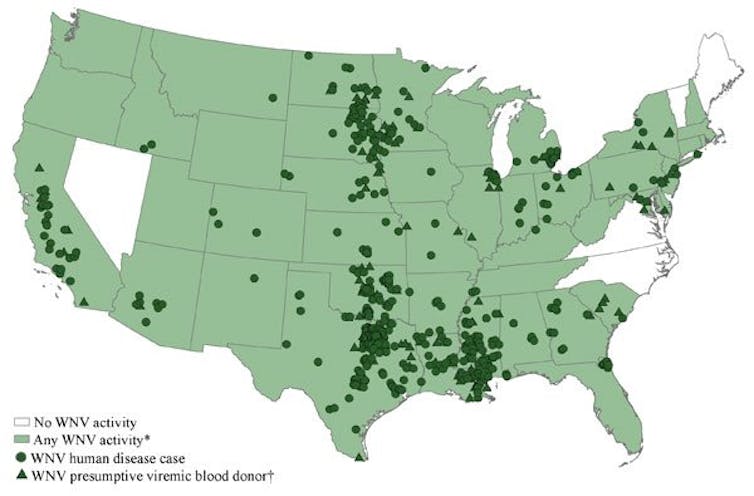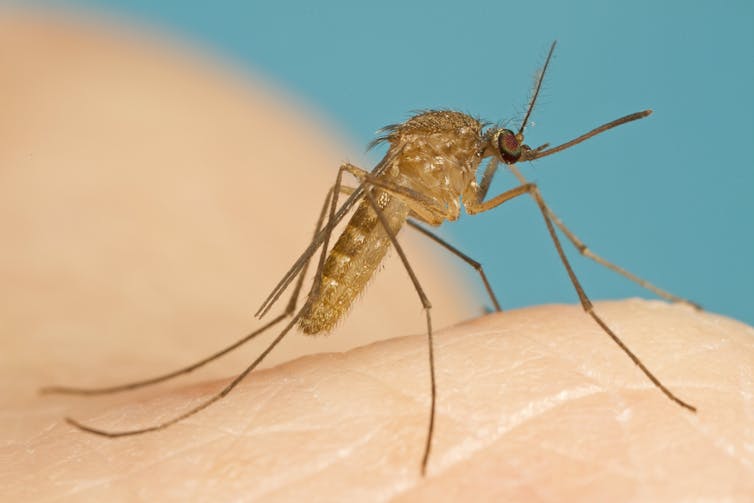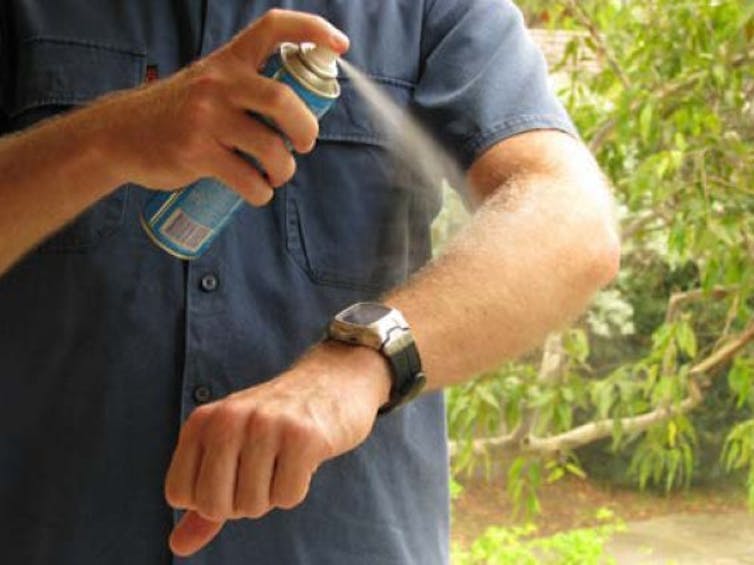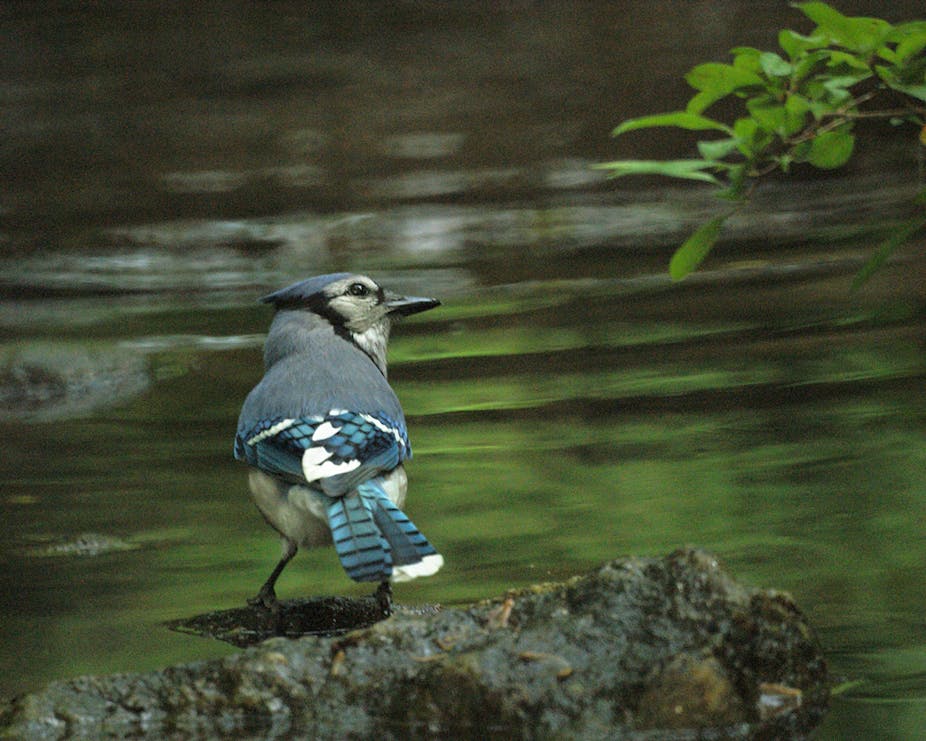A state of emergency has been declared in Dallas, Texas as local authorities battle an outbreak of the deadly West Nile virus. The state is on track to report record numbers of the mosquito-borne disease and local authorities have commenced broad-scale mosquito control.
But concerns have been raised by local communities upset at the prospect of aerial spraying due to perceptions of the potential health and environmental impacts of the insecticides.
What is West Nile virus?
West Nile virus is spread by mosquitoes and causes a potentially deadly illness. Only about one in five infected people get sick but for a small number of those (particularly those over 50), the infection can be fatal. For people with milder infections, symptoms include fever, headache, body aches, nausea, vomiting, swollen lymph glands or a skin rash.
Since the virus was first detected in North America in 1999, it has spread across the continent and had a significant impact on the health of both people and wildlife. It’s responsible for an estimated 800,000 cases of infections and a significant number of bird deaths.

The current outbreak
According to the US Centers for Disease Control and Prevention a total of 693 cases of West Nile virus disease, including 26 deaths, have been reported so far this year. An unseasonably warm winter, followed by a wet spring and hot summer, have created perfect conditions for an epidemic.
Texas has been hardest hit. The Texas Department of State Health Services is reporting a total of 552 cases, including 21 deaths for the year to date.
Debate surrounds the factors contributing to the current outbreak. Local environmental conditions have no doubt played a role in influencing the abundance of mosquito populations, but it isn’t just the number of mosquitoes that’s important. The type and behaviour of mosquitoes, as well as the local wildlife that carry the virus, are key factors.
Mosquitoes generally need to bite an infected animal before they can pass the virus on to a person. Extensive studies in North America show that birds are the main reservoirs of the West Nile virus. Most importantly, the birds that play a role in spreading West Nile virus are generally thought to be passerine species found in urban environments living close to people.

The mosquitoes responsible for spreading West Nile virus belong to the Culex genus. These mosquitoes are commonly found in urban environments, particularly heavily polluted habitats, such as drains and storm water systems.
The mosquitoes generally prefer to bite birds and play an important role in spreading pathogens from birds to humans. Studies also show that intense outbreaks occur as mosquitoes’ feeding habits shift from birds to humans in late summer. This may go some way to explaining the timing of the current outbreak.
It’s also important to consider the role of local bird populations. Studies show that a lower diversity of local bird species can increase the risks of West Nile infection in humans.
Has this year’s weather favoured those birds more likely to be carrying the virus? Are there more infected birds as well as more mosquitoes? Understanding outbreaks of West Nile virus requires more information on a range of factors, not just temperature but also on rainfall, and how many mosquitoes are about.

How to stop it
There’s no vaccine for West Nile virus so preventing disease requires a reduction in the mosquito population or a change in human behaviour. During disease outbreaks, infected adult mosquitoes flying about need to be knocked down.
A balance between public and environmental risk has to be made when the decision is made to spray for mosquitoes. Despite the seriousness of the outbreak, concerns about the possible health and environmental risks associated with mosquito control have been raised in Texas.
The products most commonly used against adult mosquitoes are synthetic pyrethroids. These insecticides are applied at ultra low volumes, often by aircraft or vehicle-mounted sprayers. Although there’s no evidence that spraying these insecticides directly impacts human or animal health, other insects can be killed if exposed to the spray. These non-target impacts can be minimised by spraying at dusk when mosquitoes are most active.
Even with aerial spraying, individuals should still take steps to prevent mosquito bites. The first line of defence is using insect repellents. There’s a range of effective products and formulations of insect repellents available and, when used correctly, they can prevent disease.

Outbreaks of West Nile virus, as the United States is currently experiencing, are a timely reminder of how difficult it can be to predict and prevent mosquito-borne disease. Complex environmental, biological and ecological factors are at play, and the education, attitude and behaviour of humans needs to be considered. There are gaps in our knowledge about appropriate surveillance and control strategies for preventing future outbreaks.

